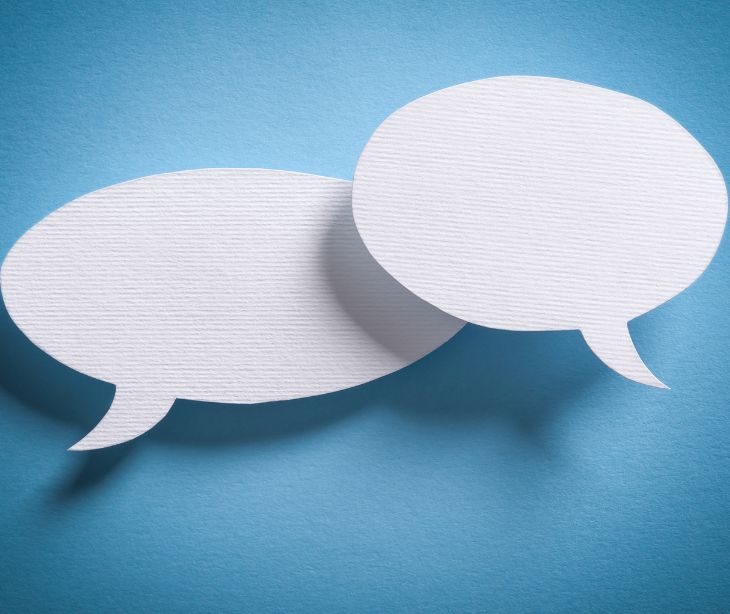
RCS messaging in the context of healthcare offers a secure and feature-rich communication platform that enables healthcare providers to send multimedia content to patients.
What is RCS messaging?
RCS messaging is a modern communication protocol between mobile carriers and smartphones, aiming to replace SMS messages with a system that supports richer text messages, high-quality media sharing, video calls, and group chats, all within the users' default messaging app.
How does RCS messaging work?
RCS allows for the transmission of messages over mobile data or Wi-Fi. Unlike its predecessor, SMS, which uses the cellular network's signaling pathways, RCS enables the exchange of high-resolution images, videos, audio messages, and file attachments within the messaging app itself.
This protocol improves communication with features like typing indicators, read receipts, group chats, and video calls. An eBioMedicine study, provided the following insight when considering the comparison between RCS messaging and alternatives, “The delivery methods of mobile messaging in screening programmes is currently limited, with SMS messaging the predominant modality. With growing functionality from Rich Communication Services (RCS), and app-based messaging, experts felt whilst introducing bi-directional messaging would be beneficial it was not yet feasible.”
Although RCS automatically falls back to SMS or MMS when necessary to guarantee message delivery, its integration requires support from both the sender's and recipient's mobile carriers, as well as RCS-enabled devices. This form of messaging opens new avenues for some businesses to interact with customers through dynamic media messages.
See also: HIPAA Compliant Email: The Definitive Guide
The use cases of RCS messaging in healthcare
- Pre-operative and post-operative care instructions: Healthcare providers can use RCS messaging to send personalized pre-operative and post-operative care instructions directly to patients' phones. These messages can include multimedia content such as instructional videos on a variety of in depth topics.
- Interactive health assessments: RCS messaging enables the deployment of interactive health assessments where patients can answer questions about their symptoms or health status. Based on the responses, the system can provide immediate advice, escalate care if needed, or reassure the patient.
- Mental health support: For mental health support, RCS messaging can be a discreet and accessible way for patients to receive daily motivational messages, mindfulness exercises, or coping strategies. It can also facilitate check-ins for patients to report their mood or anxiety levels.
- Pediatric care engagement: For pediatric care, RCS messaging can engage both parents and young patients with age-appropriate health education materials.
- Geriatric care coordination: RCS messaging can support geriatric care by facilitating medication reminders, appointment scheduling, and transportation arrangements for elderly patients.
- Language-specific healthcare communication: In diverse communities, RCS messaging can be used to send health information and instructions in the patient's preferred language.
See also: The guide to HIPAA compliant text messaging
Strategies to ensure RCS messaging remains HIPAA compliant
Healthcare organizations can focus on specific, actionable measures that address both the technical nuances of RCS technology and the regulatory requirements of HIPAA. Here are more detailed strategies:
- Implement Advanced Encryption Standard (AES) encryption: Utilize AES with a 256-bit key length for encrypting messages, considered one of the strongest encryption methods.
- Secure data in transit and at rest: Ensure encryption is applied not only while data is being transmitted but also when it's stored within the RCS messaging system.
- Detailed logging: Implement detailed logging of all RCS messaging activities, including login attempts, message sending, receiving, and access to PHI.
- Continuous vulnerability scanning: Regularly scan the RCS messaging system and associated networks for vulnerabilities.
- Penetration testing: Conduct periodic penetration testing to identify weaknesses in the RCS messaging infrastructure.
- Scenario-based training: Provide staff with scenario-based training sessions that cover potential RCS messaging pitfalls and how to handle PHI securely.
- Mobile Device Management (MDM): Use MDM software to manage and secure devices that access the RCS messaging system.
- Secure Wi-Fi use: Ensure that any Wi-Fi networks used for sending RCS messages are secure, employing WPA2 or WPA3 encryption.
- PHI minimization: Adopt policies that minimize the amount of PHI shared over RCS messaging to the least necessary for the intended purpose.
- De-identification techniques: Where possible, use de-identification techniques to remove or obscure PHI details that are not necessary for the communication.
See also: Is SMS messaging HIPAA compliant?
FAQs
How is RCS Messaging different from SMS and MMS?
Unlike SMS and MMS, which are limited by network-based restrictions, RCS operates over internet data.
What are examples of RCS?
RCS messaging is integrated into native messaging apps like Google Messages on Android devices and Samsung Messages on Samsung smartphones.
What are the disadvantages of RCS?
The disadvantages of RCS include the potential compatibility issues across different carriers and devices, and the requirement for both sender and receiver to have RCS enabled for full functionality.
Subscribe to Paubox Weekly
Every Friday we'll bring you the most important news from Paubox. Our aim is to make you smarter, faster.




